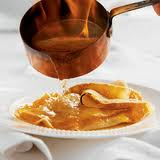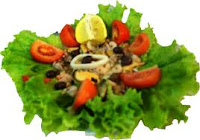French 17 Course Menu:
 |
| CANAPES |

1. Hors-D'oeuvres (Starters):


3. Oeufs (Eggs):
4. Farineux (Made of cereals):
5. Poisson (Fish):
 |
Entree Shrimp with Coucous
|
 |
Steak Entree
|
6. Entree (A small serving served before the mains or a side):
 |
| Pomegranate Sorbet |
7. Sorbet (A frozen dessert similar to Frape usually made from fruit juice or a kind of cold beverage):
8. Releve (Larger dishes compared to entree usually comes from the butchers joint with a side dish):
9. Roti (Roast):
 10. Legumes (Vegetable dish which is served with sauce, the course balance from heavy to light):
10. Legumes (Vegetable dish which is served with sauce, the course balance from heavy to light):
11. Salade:
 12. Buffet Froid (Cold Buffet):
12. Buffet Froid (Cold Buffet):
13. Fromage (Cheese):

 14. Entremete [Sweets may be hot or cold, Souffles, Crepes(pancakes) or Coupes(Ice- cream dishes)]
14. Entremete [Sweets may be hot or cold, Souffles, Crepes(pancakes) or Coupes(Ice- cream dishes)]
 15. Savourex (It can be savoury items served hot on toast or a savoury souffle):
15. Savourex (It can be savoury items served hot on toast or a savoury souffle):

16. Desserts:
 17. Beverages (Cafe):
17. Beverages (Cafe):



















































